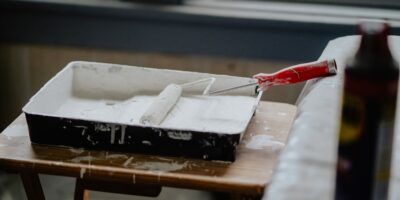Understanding Drywall Ceilings
Drywall ceilings are a common feature in residential and commercial buildings. They offer a smooth, finished look and are relatively easy to install and repair. Understanding the basics of drywall ceilings can help homeowners make informed decisions about installation, maintenance, and repair.
What is Drywall?
Drywall, also known as gypsum board or plasterboard, is made from gypsum plaster sandwiched between two sheets of thick paper. It is used to create interior walls and ceilings. The material is lightweight, easy to cut, and simple to install, making it a popular choice for construction.
Materials and Tools
Installing a drywall ceiling requires specific materials and tools. Basic materials include drywall sheets, joint compound, drywall tape, screws, and nails. Essential tools include a utility knife, T-square, drywall saw, drill, and taping knives. A ladder or scaffolding may also be necessary to reach the ceiling.
Installation Process
Preparation is crucial for a smooth installation. First, measure the ceiling area to estimate the number of drywall sheets needed. Ensure the ceiling joists are secure and evenly spaced. If adding insulation, install it before placing the drywall sheets. Cut the drywall sheets to fit, accounting for any fixtures or vents.
Securing Drywall Sheets
Start by lifting the drywall sheets to the ceiling and securing them with drywall screws. Use a drill to drive screws into the joists, spacing them about 12 inches apart. Ensure the screws are slightly recessed into the drywall without breaking the paper surface. Continue placing sheets until the entire ceiling is covered.
Taping and Mudding
Once the sheets are in place, cover seams and screw holes with joint compound, also known as mud. Apply drywall tape over the seams to create a smooth transition between sheets. Use a taping knife to spread the joint compound evenly and thinly. Allow it to dry before applying additional layers. Sand the dried compound to achieve a smooth surface.
Finishing Touches
After taping and mudding, the drywall ceiling is ready for finishing. Apply a primer to ensure an even paint application. Once the primer is dry, paint the ceiling with your chosen color. Additional finishes like texturing or adding crown molding can enhance the aesthetic appeal.
Soundproofing
Drywall ceilings also play a role in soundproofing a room. Adding insulation between ceiling joists and using thicker drywall can reduce noise transmission. Special soundproof drywall, designed with extra density, is another option for improved acoustic performance.
Common Issues and Solutions
Drywall ceilings can develop issues such as cracks, water damage, and sagging. Cracks often occur due to settling or temperature changes. Small cracks can be repaired with joint compound and sanding. Water damage requires identifying and fixing the leak source, then replacing the damaged drywall section. Sagging can result from improper installation or structural issues, which might necessitate professional assessment.
DIY vs. Professional Installation
While installing a drywall ceiling can be a DIY project, it demands precision and some physical effort. For larger projects, hiring a professional can ensure a high-quality finish and save time. Professionals can also handle complex tasks like vaulted ceilings or extensive repairs more efficiently.
Cost Considerations
The cost of installing a drywall ceiling varies based on factors like room size, drywall type, and professional labor. Standard drywall sheets are relatively inexpensive, but specialized drywall for soundproofing or moisture resistance costs more. Labor costs can also add significantly, especially for complex installations.
Environmental Considerations
Gypsum, the primary component of drywall, is a natural mineral. Some drywall products include recycled materials, reducing environmental impact. Proper disposal of drywall waste is important due to the potential release of harmful gases in landfills. Recycling programs for drywall can further minimize environmental harm.
Innovations in Drywall
Recent advancements in drywall technology have introduced products with enhanced features. Mold-resistant drywall is treated to prevent mold growth, ideal for damp areas like bathrooms. Fire-resistant drywall contains additives that enhance fire-retardant properties, providing additional safety in case of fire.
Maintenance Tips
Regular maintenance can prolong the life of a drywall ceiling. Inspect regularly for signs of damage such as cracks or water stains. Address minor repairs promptly to prevent further deterioration. Repaint the ceiling every few years to maintain its appearance and protect the surface.
Historical Context
The use of drywall became widespread in the mid-20th century as a quick, efficient alternative to traditional plaster walls. Its popularity grew due to the ease of installation, lower cost, and flexibility in design. Today, drywall remains a staple in modern construction due to its versatile and practical nature.
Installation Challenges
Drywall ceiling installation can present challenges, especially in older homes with uneven surfaces. Ensuring a flat, secure installation requires careful planning and sometimes additional steps like shimming joists or using specialized fasteners. Proper technique and patience are key to overcoming these obstacles.
Benefits of Drywall Ceilings
- Cost-effective and readily available.
- Easy to customize with paint and textures.
- Effective in soundproofing with proper insulation.
- Quick to repair compared to plaster.
Choosing the Right Drywall
Drywall comes in various thicknesses, typically ranging from 1/4-inch to 5/8-inch. Thicker drywall offers better sound and fire resistance, but it’s heavier and more challenging to handle. Moisture-resistant drywall is recommended for areas prone to humidity, while standard drywall is suitable for most other spaces.
FAQs About Drywall Ceilings
Many people have questions about drywall ceilings. Common inquiries include methods for repairing cracks, best practices for painting, and how to address water damage. Researching these topics can provide helpful insights into maintaining a drywall ceiling in optimal condition.
“`

Subscribe for Updates
Get the latest articles delivered to your inbox.
We respect your privacy. Unsubscribe anytime.